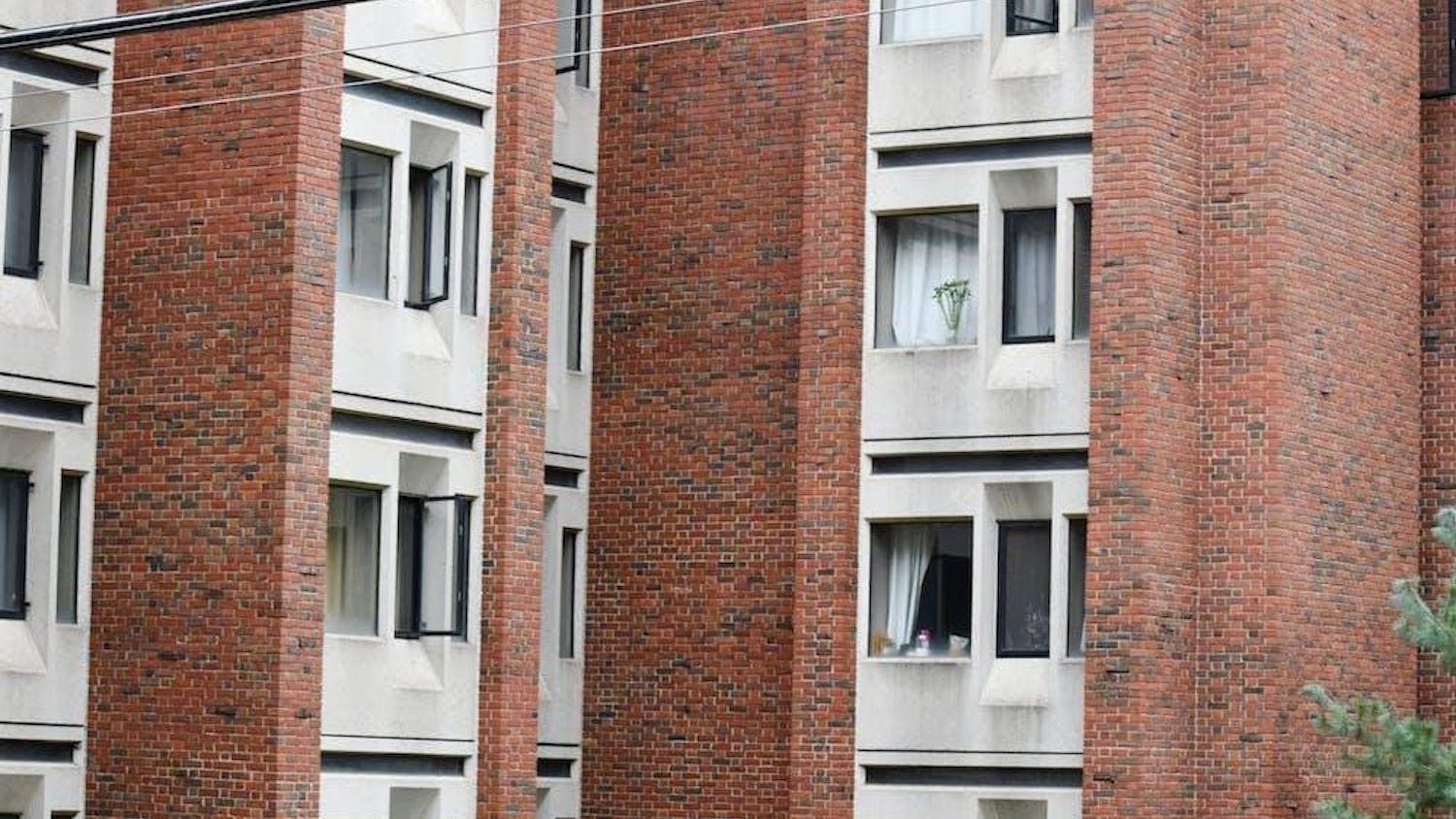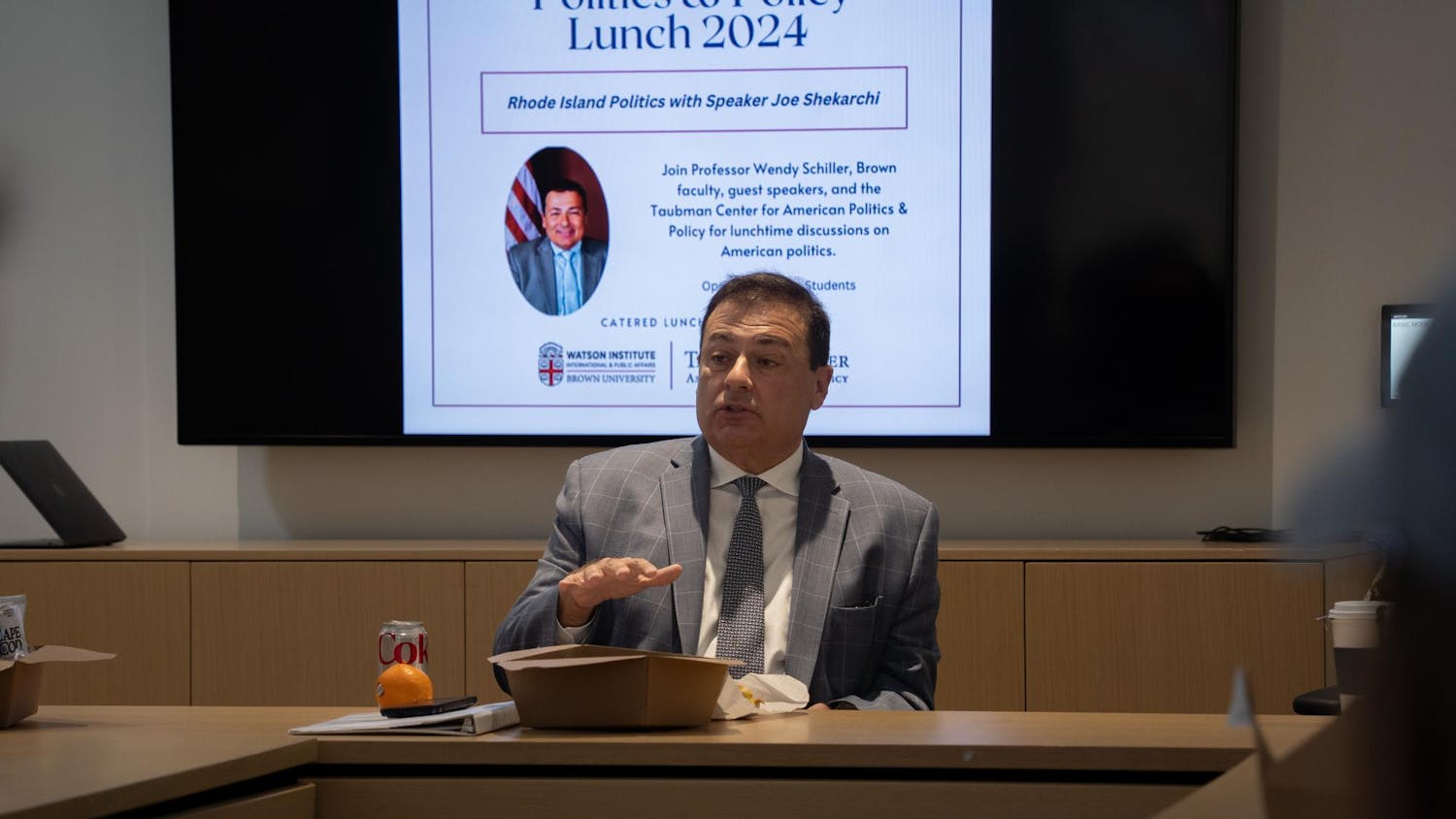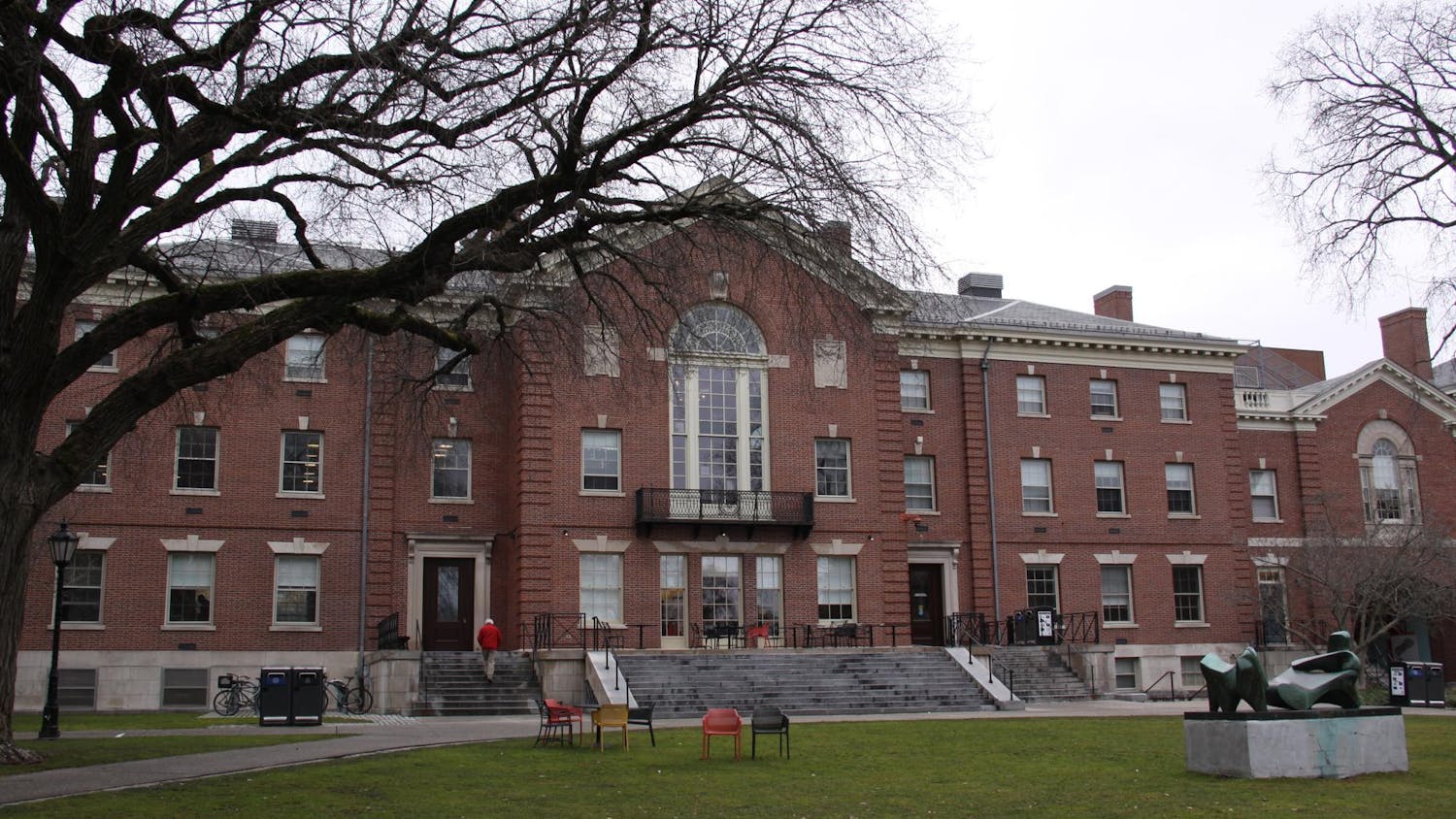"Separate is not equal." At the end of the Janus Forum's panel on gay marriage last night, Jesse McGleughlin '14 — the daughter of two lesbian mothers — stood up to argue for the right of gay couples to marry, brandishing the familiar phrase to the applause of the audience in MacMillan 117. The panel featured both proponents and opponents of gay marriage, but McGleughlin was responding to an argument from Douglas Allen, professor of economics at Simon Fraser University, who said gay couples should be granted a marriage institution separate from that of heterosexual couples.
In his presentation, Allen explored the costs and benefits of opening the institution of marriage to include gay couples. He said gay, lesbian and heterosexual couples are "much different" from each other, and traditional marriage should not include gay couples.The laws governing heterosexual marriage would have to adapt to accommodate the small number of gay couples, he argued, with negative effects on heterosexual couples, including a higher divorce rate.
He described civil unions as a parallel institution to marriage for gay couples, and suggested the possibility of creating one type of union for lesbians and another for gays.
On the other side of the debate, M.V. Lee Badgett, professor of economics at the University of Massachusetts at Amherst, said there was virtually no difference between heterosexual and gay couples and that gay marriage poses "no harm to the institution of marriage." She highlighted similar divisions of labor and income disparity in gay and heterosexual households. Both gay and heterosexual couples want to marry for reasons of "love, commitment and mutual support," Badgett said.
Andrew Koppelman, professor of law at Northwestern University, described two different models of marriage. The older, more traditional model sees couples getting married soon after they mature sexually for the purpose of procreation. He then described a newer model, in which couples use contraception to delay childbearing and marriage until after their education, with the result of falling marriage rates and higher income families. Gay couples resemble the latter sort of married couples, but not the former, he said.
Badgett and Allen also clashed over statistics. Badgett said several surveys suggest that 2 to 3 percent of Americans are gay or bisexual, while Allen cited data that only 0.7 percent of Canadians identify as gay, with only 6,900 children living in gay households. He said the low Canadian figure meant legalizing gay marriage is not worth the "inclusion costs."
Maggie Gallagher, president of the Institute for Marriage and Public Policy, drew attention to the relationship between marriage and responsible procreation. Gallagher argued that children "long for" a mother and a father and that marriage should support the nuclear family. A student asked her whether infertile heterosexual couples should be prevented from marrying. In response, Gallagher highlighted the historical importance of sexual potency rather than fertility in marriage. Allen added that infertile couples are "freeriders" on the institution of marriage, because they do not negatively impact heterosexual couples.
The panelists also addressed the symbolic importance of gay marriage. Badgett said gay married couples felt a sense of "social inclusion" after they married. She also said that, historically, marriage's exclusivity has helped to create the social identity of lesbians and gay men.
Allen said gay marriage devalues the institution of marriage. While Gallagher said it is "not discriminatory to treat different things differently," Koppelman described civil union as a palpable insult to gays.




